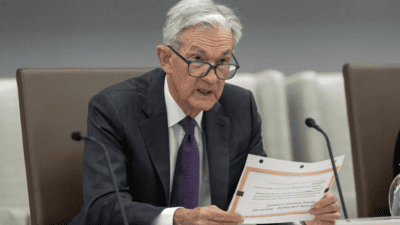Sensex zooms 12,000 points in just 3 months! Is the Rs 72 lakh crore stock market rally sustainable? Here’s what investors should focus on

India’s benchmark Sensex has witnessed an exceptional increase of 12,000 points within three months resulting in a Rs 72 lakh crore rally. The remarkable 17% increase from April 7’s low of 71,425 has driven markets near their peak levels again. The Sensex and Nifty have shown positive performance for four successive months, with domestic institutional investors investing Rs 3.5 lakh crore whilst foreign institutional investors maintained positive net purchases across the quarter. The total market capitalisation of BSE-listed companies has increased by Rs 72 lakh crore, reaching Rs 461 lakh crore, according to an ET report.Investors who remained in cash positions now face significant opportunity costs as both domestic and international capital flows into equities ahead of crucial events, including Trump’s July 9 tariff deadline and the upcoming Q1 earnings announcements.
Stock market rally: What’s the danger?
The most important point to note is that the excessive capital inflows have generated concerning disparities between market values and core business metrics, as market experts note that all segments – from large to small capitalization stocks – are currently valued significantly above their historical averages.Market experts are expressing serious concerns about inflated valuations, urging caution as the market approaches crucial deadlines for tariffs and corporate earnings announcements, despite the prevailing optimistic sentiment.“We believe this is basically running on liquidity,” warns Venkatesh Balasubramaniam of JM Financial Institutional Securities according to the ET report. “Domestic flows have been very strong with monthly SIP numbers over Rs 26,000 crore per month. Since March onwards, FII inflows have turned positive. Definitely this is running on flows.” Additionally, mutual funds maintain substantial cash reserves, with May’s holdings at Rs 2.17 lakh crore.Also Read | Clearing NSE IPO hurdles: National Stock Exchange offers Rs 1,388 crore to SEBI; aims to settle co-location and dark fibre cases
What should investors do?
“The first and foremost recommendation to investors is to moderate return expectations,” cautions Nilesh Shah, MD of Kotak AMC. “Last five years returns are unlikely to be repeated in the next two to three years. Markets are fairly valued or a little bit over fairly valued, and re-rating is unlikely, which means returns will be linked with earnings growth likely in high single digit, low double digit,” he was quoted as saying.Shah suggests a broader investment approach: “Outside of equity, there are asset classes—REITs, InvITs, debt mutual funds, performing credit, AIFs, precious metals, index or ETFs. Please maintain your asset allocation across debt, equity, commodity, and real estate. Do not put everything in equity.”Past data indicates positive prospects for July, with favourable returns recorded in nine out of the previous ten years, averaging 3.6%. Recent performance data shows returns of 3.92% in 2024 and 2.94% in 2023, supporting the month’s positive trend.The RBI’s recent monetary policy actions, including rate reductions and an unexpected CRR cut, have significantly enhanced domestic liquidity conditions, with the financial sector emerging as the primary beneficiary.“Lower interest rates are helping banks and NBFCs. Credit growth remains strong, and asset quality is stable,” notes Krishna Appala of Capitalmind PMS, highlighting financials as a constructive outlook area.According to the report, Karthick Jonagadla of Quantace Research identifies specific opportunities in infrastructure financing: “Lower policy rates and relaxed provisioning norms boost credit growth. PFC and REC leapt ~4% when the RBI’s new rules landed, and PSU-bank indices hit six-month highs.”Also Read | Top stocks to buy this week: Spotlight on the bulls – check stock recommendations with a 3-month horizonIn the ongoing market recovery led by capital expenditure and financial sectors, Mihir Vora of TRUST Mutual Fund observes that “in financials, we have seen capital market plays doing well but banks and NBFCs have lagged” and suggests potential improvement in their performance.Technology stocks, which have underperformed considerably this year, are drawing value-focused interest as price levels become more compelling and business metrics indicate positive momentum.“One can keep an eye on the IT sector which has not performed particularly well year-to-date,” advises Atul Bhole of Kotak Mutual Fund. “After every major technology adoption, Indian vendors have actually experienced more volume of work. Large-caps are trading at relatively reasonable valuations and provide dividend yield support of 2-2.5%.”The industry’s prospects are bolstered by anticipated return to standard business patterns, with Bhole stating that “assuming normal business cycle returning, IT spends can come back” as worries regarding the US economy and AI-driven changes might be excessive.The chemicals industry is garnering renewed attention following a severe market decline over two years, with initial indicators of price stabilisation suggesting potential recovery.“The persistent price fall of 2 years seems to be over and prices are stabilizing now. There are initial hopes for revival by companies,” notes Bhole. “Companies are continuously investing behind products, client engagements and facilities. It may need some more patience, but provides a good opportunity to accumulate select chemical stocks.”Nevertheless, export-focused pharmaceutical and chemical enterprises might encounter challenges due to US tariff uncertainties, necessitating careful selection of investments within these sectors.Numerous industry segments that previously underperformed compared to the broader market are now displaying positive momentum as domestic consumption strengthens alongside continued policy backing, the ET report said.“Consumer discretionary segments like automobiles (two-wheelers as well as four-wheelers), white goods have lagged and can now start performing,” highlights Vora, whilst pointing to better rural demand and consistent urban spending patterns.Also Read | Gold price prediction today: Where are gold rates headed on July 1, 2025 and in the near-term?Appala identifies prospects across consumption categories: “Rural demand is improving, and urban consumption is steady. FMCG, two-wheelers, and discretionary segments are showing healthy trends.”The manufacturing and industrial sectors benefit from sustained government capital expenditure, with the PLI scheme bolstering domestic production. “Infrastructure and capital goods companies are seeing strong demand,” states Appala, whilst Jonagadla notes that “order books are overflowing—L&T reported a record ₹1 trillion intake in Q4 FY25.”The defence sector maintains its strong long-term potential, however recent significant price increases have resulted in valuations that discourage new investments.Defence remains an attractive long-term investment theme, although current elevated price levels and sharp gains warrant caution regarding new positions, as per Appala’s assessment.With markets focused on Trump’s 9 July tariff deadline and first quarter performance reports, analysts anticipate further gains despite high valuations.Also Read | India-US interim trade deal may be finalised this week, claims report; India hardens stance on agriculture – says ‘red lines will not be crossed’“While valuations are elevated in parts, the broader context remains supportive,” argues Vora. “Earnings are coming through, liquidity is abundant, and policy remains growth-focused. The uptrend looks sustainable, though we do expect pockets of volatility.”Investors should consider strategic allocation across banking sector, value-oriented technology shares, rebounding chemical companies and domestic consumption sectors whilst maintaining balanced portfolios, as the market rally driven by surplus liquidity seeks support from core business performance.(Disclaimer: Recommendations and views on the stock market and other asset classes given by experts are their own. These opinions do not represent the views of The Times of India)








